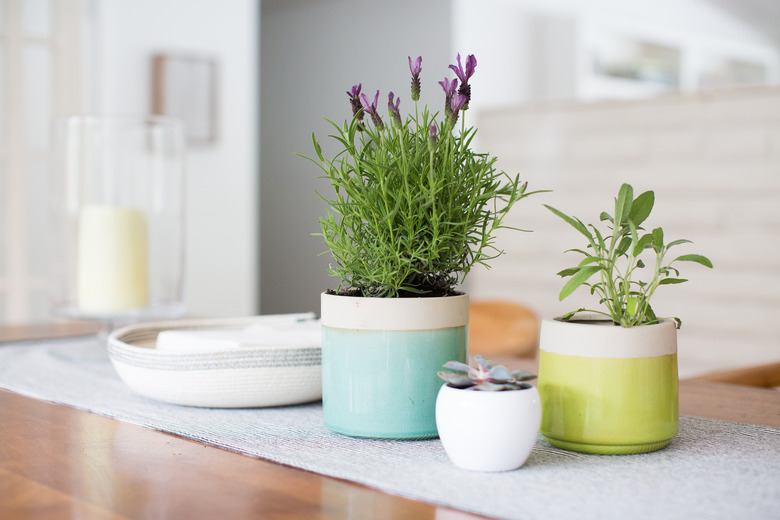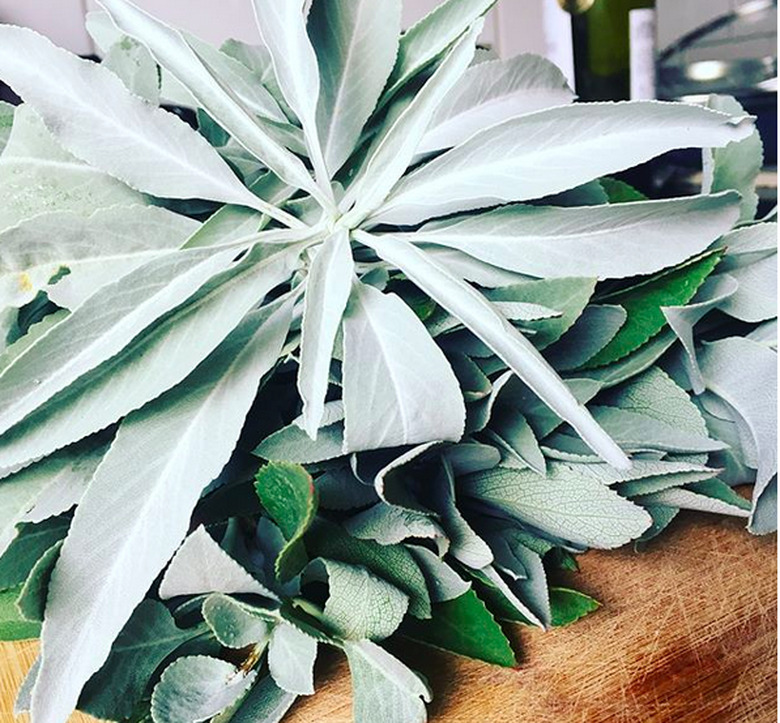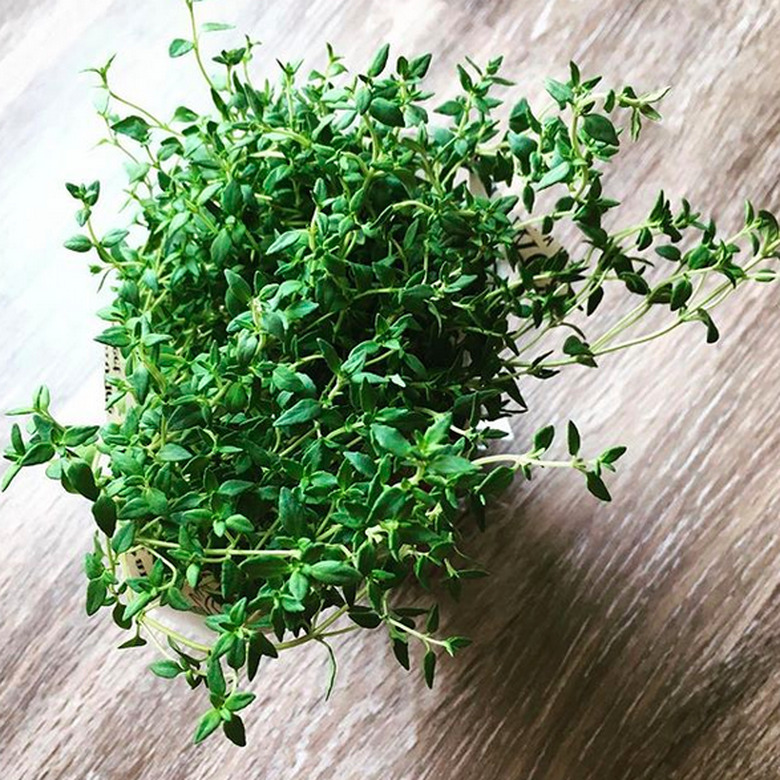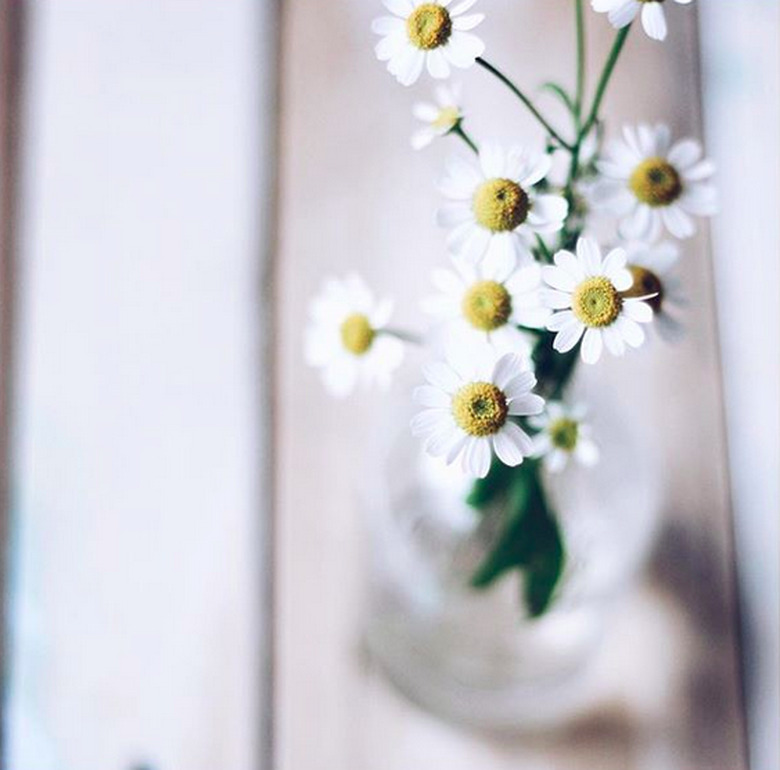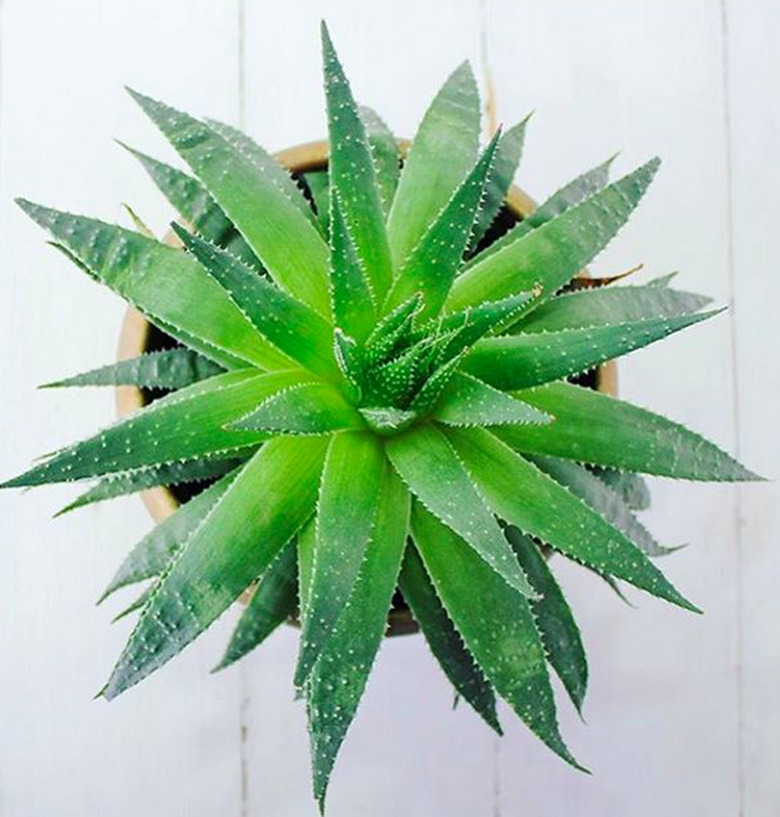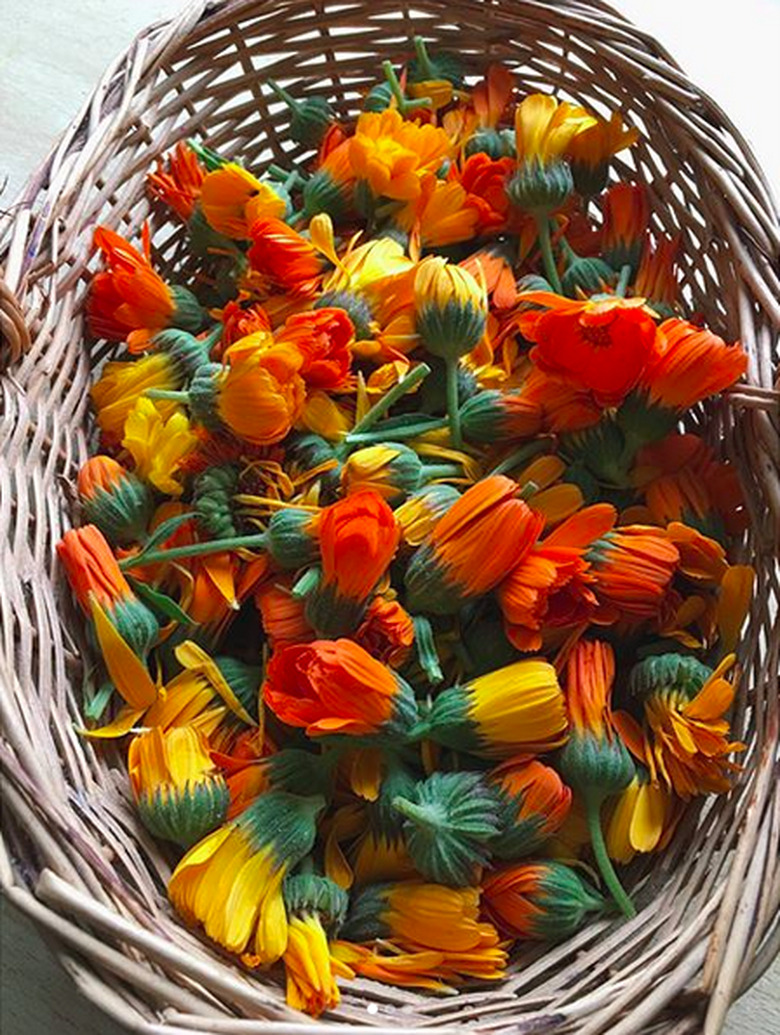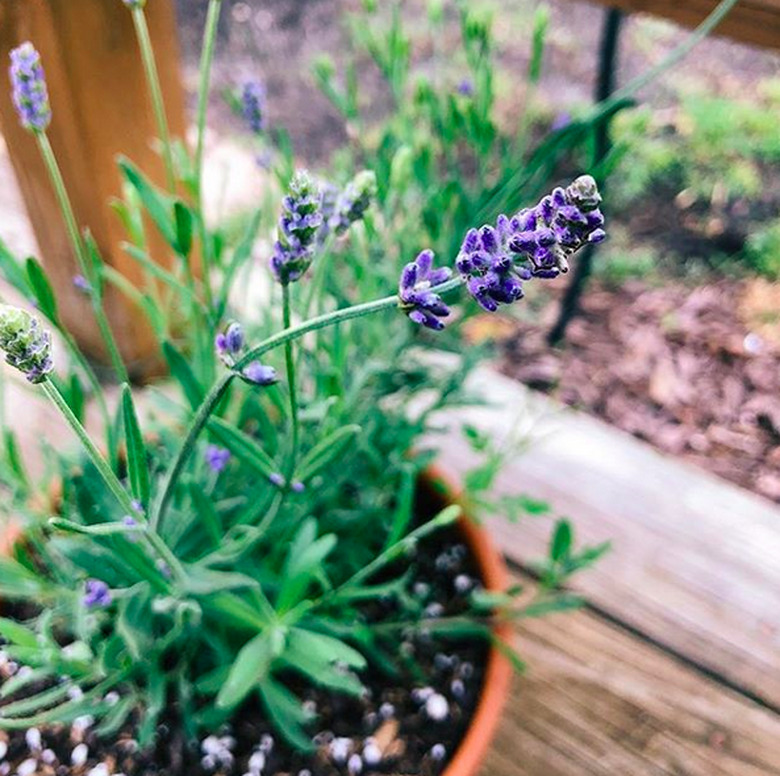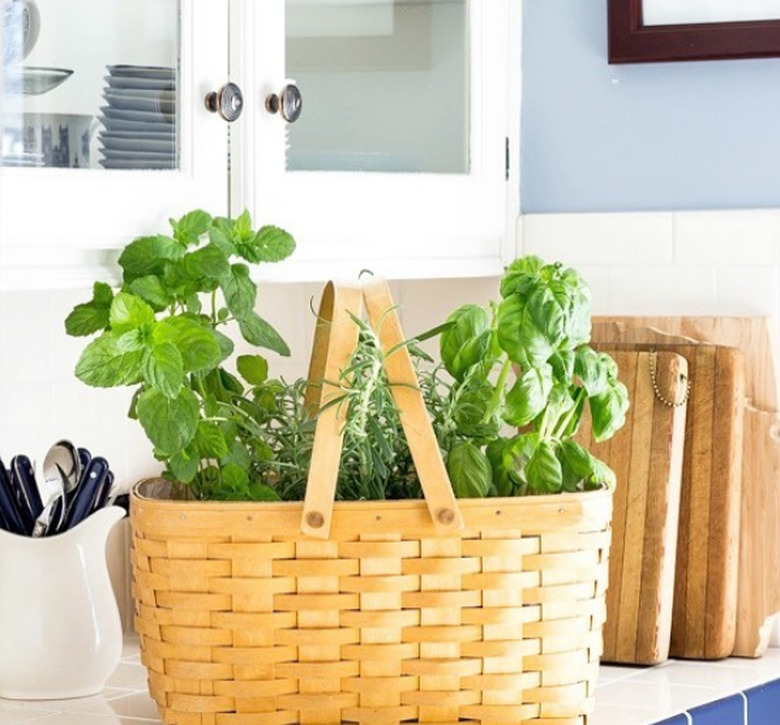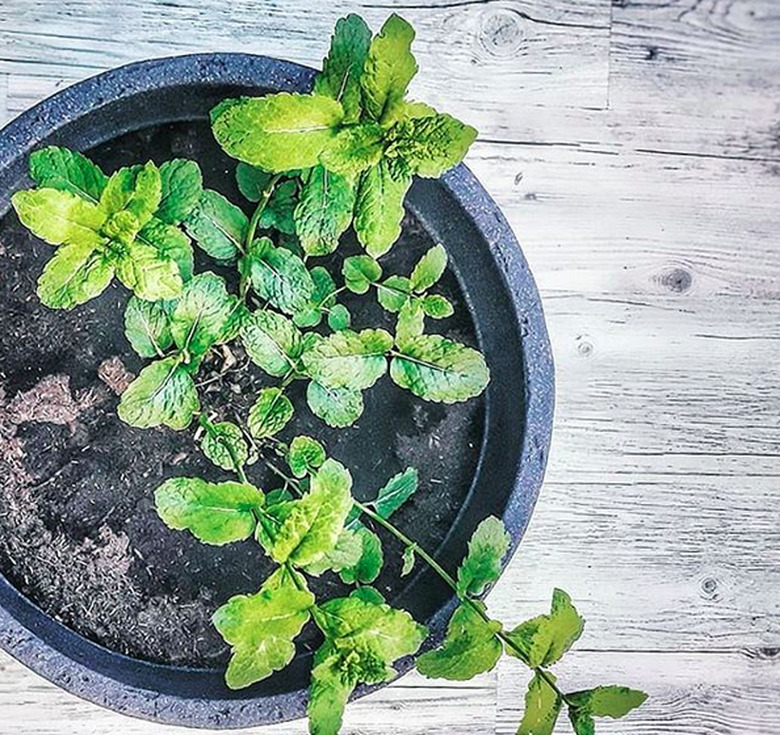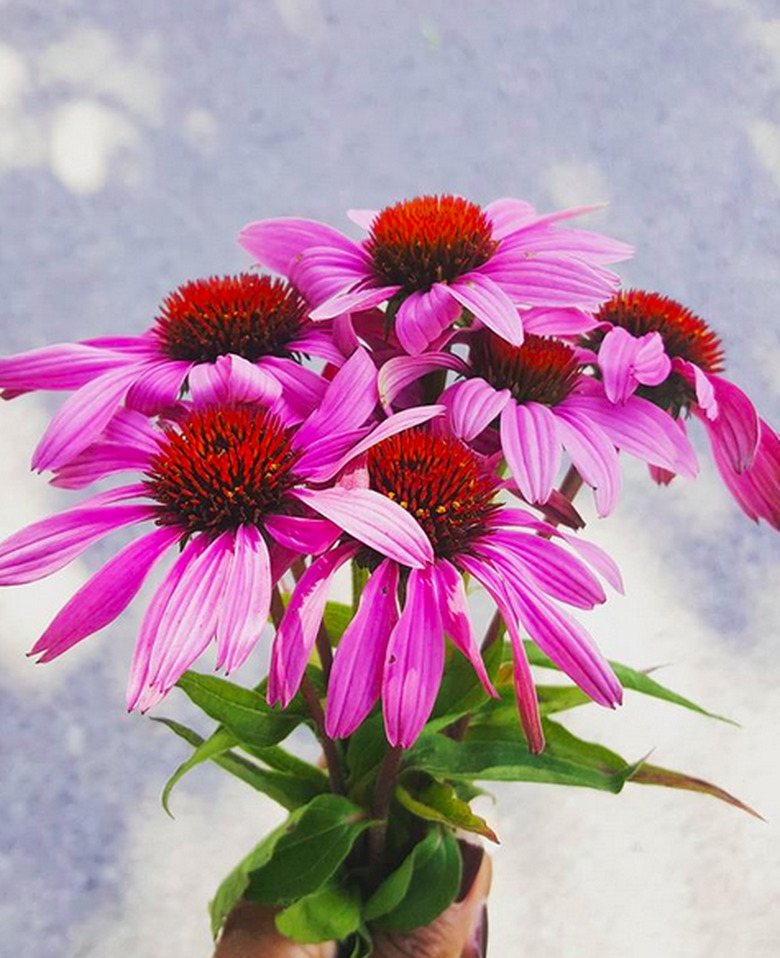These Houseplants Can Actually Help You Feel Better
True plant lovers believe that having living plants around their home brings positive energy, cleans the air, and makes every room smell good. But did you know that according to ancient lore as well as modern herbalists, humble houseplants and herbs can also make you feel better? Now, we're not saying to ditch traditional medicine for your ailments — you should always check in with your doctor first. (And not talking about Dr. Google.) But, if you're curious about which botanicals can be most beneficial, here's where to begin. Why not have a little fun with this?
1. Sage
1. Sage
Sage (Salvia officinalis) may not need an introduction. It's a shrub often grown in home gardens for culinary use, particularly in poultry stuffing. But its long, thin green leaves below the delicate purple flowers can help remedy digestive issues and heal sore throats and gum infections. Place 10 leaves in a one liter Mason jar, then fill it up with hot water. Allow it to steep for 10 to 15 minutes. This can be used as a gargle or consumed as tea.
2. Thyme
2. Thyme
Thyme (Thymus vulgaris) is one of the herbs most commonly grown at home. Like rosemary, thyme is a desert plant requiring a sunny location without much water. Thyme has been used medicinally for centuries. It contains a strong antiseptic that makes thyme tea an excellent treatment for congestion, indigestion, and coughs. Thyme oil, applied to cuts, speeds healing. To make thyme oil, crush some leaves in a small glass jar. Then add enough sunflower oil to completely cover the herbs. Allow it to sit in a warm place for one week.
3. Chamomile
3. Chamomile
Chamomile flowers (Matricaria recutita) resemble tiny daisies with long stems. They are easy to grow and, used as a tea, provide very gentle relief from many woes, including problems of the nervous system and digestive system. This plant's slightly bitter tea is made with the small flowers. If you are just trying to relax, steep the tea for a short period, perhaps five minutes. For digestive upsets, steep 10 to 15 minutes. Chamomile both helps relax a stressed mind and eases physical distress.
4. Aloe Vera
4. Aloe Vera
More people may use aloe vera (Aloe vera), or at least know about its soothing powers, more than any other medicinal plant. The aloe vera is a succulent often grown as a container houseplant or in the garden. It has thick, stiff leaves and slender, orange flower spikes. Inside the leaves is a cooling gel that soothes burns, including sunburns, and also helps wounds heal.
5. Marigold
5. Marigold
Many gardeners light up their balconies or flower beds with bright, orange pot marigolds (Calendula officinalis), easy-care, sun-loving annuals that self-sow freely. Not only are these flowers lively, they also act as pest repellents, keeping worms away from garden plants. Marigolds are used for many purposes in herbal medicine but are perhaps best known for their ability to treat skin conditions, including insect bites, sunburns, acne, wounds, and stings. Simply pluck a fresh flower and rub it on the affected part of the skin.
6. Lavender
6. Lavender
You may think of lavender (Lavandula angustifolia) as a scent rather than a medicinal herb, but the truth is, it wears both hats. First and foremost, lavender is a stunning perennial with fragrant, bright purple flowers. But lavender has also served as a medicinal herb since ancient times, with lavender oil an excellent means to treat burns, bites, rashes, and swelling. Make lavender oil by chopping up flowers and leaves in a glass jar, then cover with mild vegetable oil. Allow it to steep in a warm, dry place for a week or more.
7. Basil
7. Basil
Bright basil (Ocimum basilicum) is a fresh-smelling herb often grown in containers in American kitchens. This easy-going plant can thrive in sun or part-shade and needs frequent irrigation to keep soil moist. Basil is widely used as a cooking ingredient, especially popular in Mediterranean food. Eating a handful of it, in a salad for instance, settles the stomach. You can also rub a leaf on a cut or scrape to prevent infection.
8. Peppermint
8. Peppermint
Peppermint (Mentha piperita) is a fresh-smelling plant you can easily grow in a container in the kitchen. Outside, it is a fearless colonizer, taking over whatever space isn't occupied and crowding out smaller plants. That's why many gardeners grow this shrub in contained beds or pots. Despite its aggressive growth, peppermint leaves are known for their soothing qualities and can be used to relax tense muscles and ease pain. Infuse the leaves in hot water to make a tea that relieves stomach aches and calm nausea.
9. Echinacea
9. Echinacea
Echinacea plants (Echinacea angustifolia) are commonly known as coneflowers after their blossom shape (a large bulb facing upwards and small petals pointing down.) They are garden favorites, easy to grow indoors or in a home flower bed. Echinacea is used by herbalists to strengthen the immune system and to treat skin infections. Prepare a skin wash by placing fresh flower petals in hot water, then apply this with a compress to itchy areas, bug bites, and hives.
10. Lemon Balm
10. Lemon Balm
Lemon balm (Melissa officinalis) looks and smells a little like mint and is, in fact, part of that large family. The oversized green leaves also carry the scent of lemon. The plants grow to 24 to 36 inches tall in the garden, creating a nice green clump, but they stay much smaller in a container in the kitchen. It's a great plant to have around and can help with many different conditions. Rub the large flowers against cold sore outbreaks to reduce inflammation and hasten healing. Or, make lemon balm tea and drink in the evening to fight insomnia.
References
- SymbolFind: 10 Common Medicinal Plants and Their Uses
- The Self-Sufficient Living: 15 Most Effective Medicinal Herbs To Grow In Your Garden
- David Wolfe: 7 Medicinal Plants You Can Easily Grow at Home
- Live in the Now: Top 10 Medicinal Plants You Can Grow at Home
- Studio Botanica: Sage Tea
- Annie's Remedy: Herb Chart
- Natural Medicinal Herbs: Pot Marigolds
